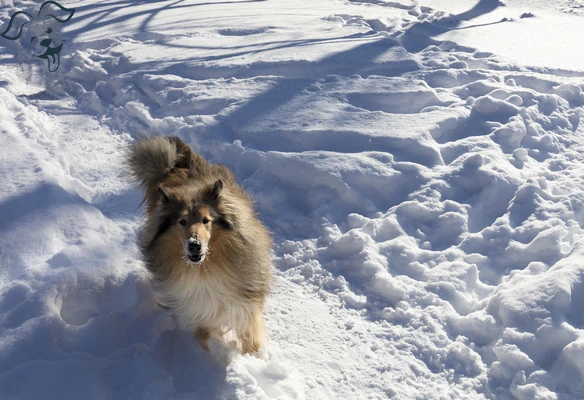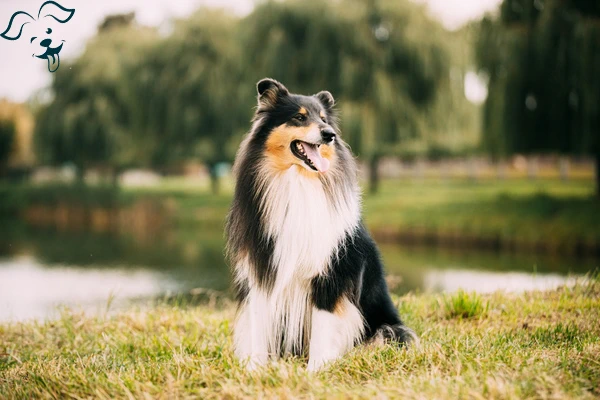CARING WITH FAMILY
|
| The level of friendliness a particular breed displays towards family members and familiar individuals can vary significantly. Certain breeds may seem distant and reserved towards everyone except their owner, whereas other breeds tend to treat everyone they know as their closest pal. |
LOVE WITH CHILDREN
Unwise
Good With Children
|
| The level of tolerance and patience a breed exhibits towards children, as well as its general family-friendly nature is important to consider. It is vital to supervise dogs when they are around young children or children of any age who have limited experience with dogs. |
BEHAVIOR WITH DOGS
Unwise
Good With Other Dogs
|
| The overall sociability of a breed towards other dogs should be considered. It is important to supervise dogs during interactions and introductions with other dogs. However, certain breeds naturally have a higher tendency to get along well with other dogs both within the household and in public settings. |
SHEDDING LEVELS & MANAGEMENT
No Shedding
Hair Everywhere
|
| The amount of fur and hair a breed tends to shed is an important factor to consider. Breeds with high shedding tendencies will require more frequent brushing are more likely to trigger specific allergies and may necessitate more consistent vacuuming and lint-rolling. |
COAT GROOMING STANDARDS
|
| The grooming needs of a breed encompass various aspects such as bathing, brushing, trimming and other forms of coat maintenance. When evaluating the grooming effort required, it is crucial to consider factors like available time, patience and budget. It is also important to note that regular nail trimming is necessary for all breeds. |
DROOLING INTENSITY
Less Likely to Drool
Always Have a Towel
|
| The tendency of a breed to drool is worth considering. For individuals who prefer cleanliness, breeds that can leave trails of slobber on your arm or create significant wet spots on your clothes may not be the most suitable choice. |
COAT STYLES GUIDE |
| Double |
| COAT SPECTRUM |
| Long |
FRIENDLINESS
Reserved
Everyone Is My Best Friend
|
| The level of friendliness a breed typically exhibits towards strangers is an important aspect to consider. Certain breeds may display reserved or cautious behavior around all unfamiliar individuals, regardless of the setting. On the other hand, some breeds will happily greet and engage with new people whenever they come across them. |
LIVELINESS
Only When You Want To Play
Non-Stop
|
| The level of enthusiasm a breed typically possesses for play, even beyond their puppyhood stage is worth considering. Some breeds will maintain their interest in games like tug-of-war or fetch well into their adult years. Conversely, other breeds will be content to spend most of their time relaxing on the couch with you. |
VIGILANCE INTENSITY
What's Mine Is Yours
Vigilant
|
| The inclination of a breed to alert you of the presence of strangers is a notable characteristic. These breeds are more likely to react to any potential threat, whether it's the arrival of the mailman or the sight of a squirrel outside the window. Moreover, these breeds tend to become more comfortable with strangers who enter the house and are accepted by their family. |
ADAPTATION CAPACITY
Lives For Routine
Highly Adaptable
|
| The adaptability of a breed to handle change is an important factor to consider. This encompasses the breed's ability to adjust to variations in living conditions, noise levels, weather, daily schedules and other changes that may occur in day-to-day life. |
OBEDIENCE LEVEL
Self-Willed
Eager to Please
|
| The ease of training and the willingness of a dog breed to learn new things are crucial aspects to consider. While some breeds are naturally eager to please their owners and demonstrate a strong desire to learn, others may display a more independent nature and prioritize doing what they want, when they want and wherever they want. |
STAMINA LEVEL
|
| The amount of exercise and mental stimulation a breed requires is an important consideration. High energy breeds typically have a strong desire for physical activity and mental engagement. They are ready to go and eager for various adventures, spending their time running, jumping and playing throughout the day. On the other hand, low energy breeds are more inclined to be calm and relaxed, often content with simply lounging around and snoozing. |
VOCALIZATION
|
| Frequent |
LEARNING CURIOSITY LEVEL
Happy to Lounge
Needs a Job or Activity
|
| The amount of mental stimulation a breed requires to stay happy and healthy is an important consideration. Purpose-bred dogs that have specific jobs often require mental exercises involving decision-making, problem-solving, concentration and other qualities. Without adequate mental stimulation, these dogs may become restless and create their own activities to keep their minds occupied, which might not align with the owner's preferences. Providing appropriate mental exercises is crucial to keeping such breeds mentally satisfied and preventing undesirable behaviors. |
| COLORS |
|
Description
|
Registration Code
|
|
Sable & White
|
165
|
|
Black White & Tan
|
034
|
|
Blue Merle White & Tan
|
052
|
|
Blue Merle & White
|
051
|
|
Black & White
|
019
|
|
Sable Merle & White
|
277
|
|
White Black & Tan
|
219
|
|
White & Black
|
202
|
|
White & Sable
|
215
|
|
White
|
199
|
|
White Blue Merle & Tan
|
265
|
|
White Blue Merle
|
266
|
|
White & Sable Merle
|
296
|
|
Black & Tan
|
018
|
|
| PATTERNS | . |






























FRIENDLINESS
LIVELINESS
VIGILANCE INTENSITY
ADAPTATION CAPACITY